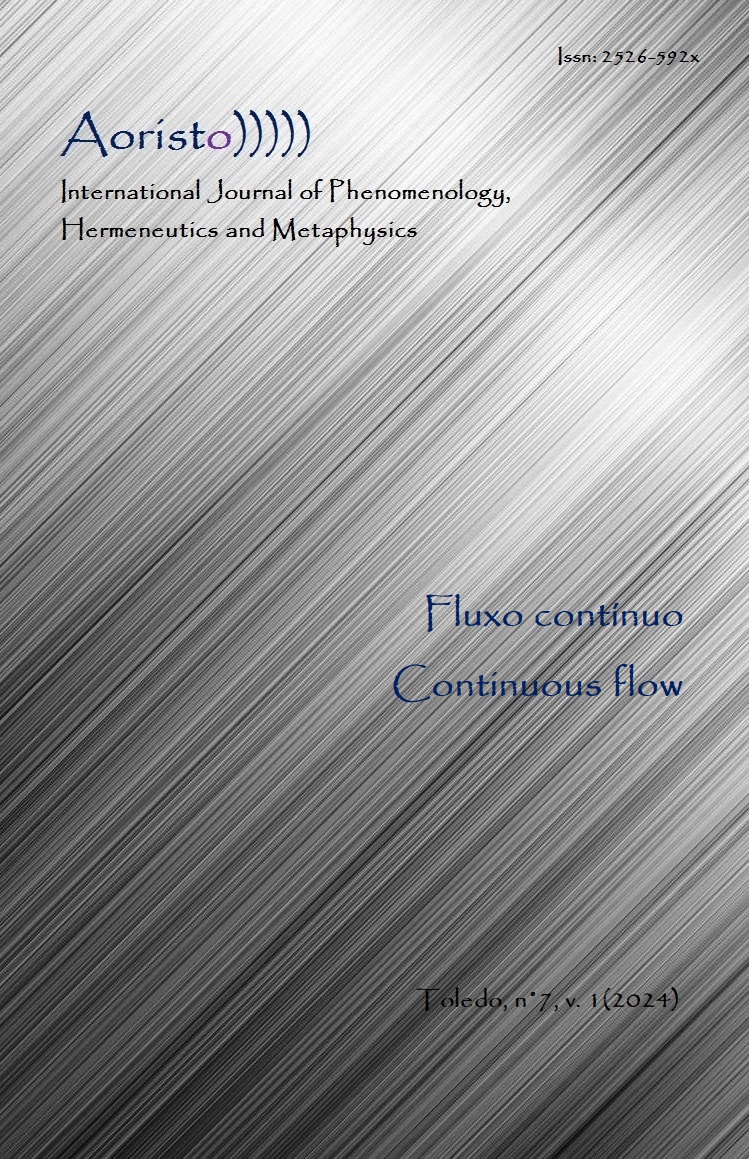From behaving to being:
the possible authenticity of the child as early dasein
DOI:
https://doi.org/10.48075/aoristo.v7i1.28582Palavras-chave:
Childhood, Authenticity, Being-there, HeideggerResumo
What is childhood? This basic but not less intriguing question guides the present philosophical exercise. However, along the journey, that first question inevitably leads us to some other indispensable queries: What are we able to know about children through the way they behave? Is it ‘what’ they are indeed? If behaviours show us some things, cannot they, at the same time, hide others from us? What is it they are showing or hiding? What is at stake here? Returning to our first and guiding question and paying a little more attention to it, we may realise a very important detail there, which consists in just two letters: the use of the verb be. Most of the times, we ask ‘What is childhood?’ and, a moment later, we turn away and forget what we were primarily looking for. Completely lost and without even noticing it, we eagerly begin our saga in order to produce theories and more theories about childhood. But what have become of the children themselves? Now they are nothing more than objects of our systematic and empirical scientific researches. We have been treating them as machines of behaviour and – with the help of cutting-edge technology – products of our manipulation. This way, we abandon who they are. We ignore their being. If we are truly willing to help them discover their ownmost potentiality-for-being (eigenstes Seinkönnen), that is, their possible authenticity (Eigentlichkeit), then we must face the challenge of receiving them as the Dasein they are.
Downloads
Publicado
Como Citar
Edição
Seção
Licença

Este trabalho está licenciado sob uma licença Creative Commons Attribution-NonCommercial-NoDerivatives 4.0 International License.
Copyright Notice
1. I grant the AORISTO – International Journal of Phenomenology, Hermeneutics and Metaphysics the first publication of my article, licensed under Creative Commons Attribution (which allows sharing of work, recognition of authorship and initial publication in this journal).
2. I confirm that my article is not being submitted to another publication and has not been published in its entirely on another journal. I take full responsibility for its originality and I will also claim responsibility for charges from claims by third parties concerning the authorship of the article.
3. I also agree that the manuscript will be submitted according to the Aoristo’s publication rules described above.
License Creative Commons
This work is licensed under a Creative Commons Atribuição-NãoComercial-CompartilhaIgual 4.0 Internacional, which allows you to share, copy, distribute, display, reproduce, in whole or in part, for as long as there is no commercial purpose, and authors and source are cited.


